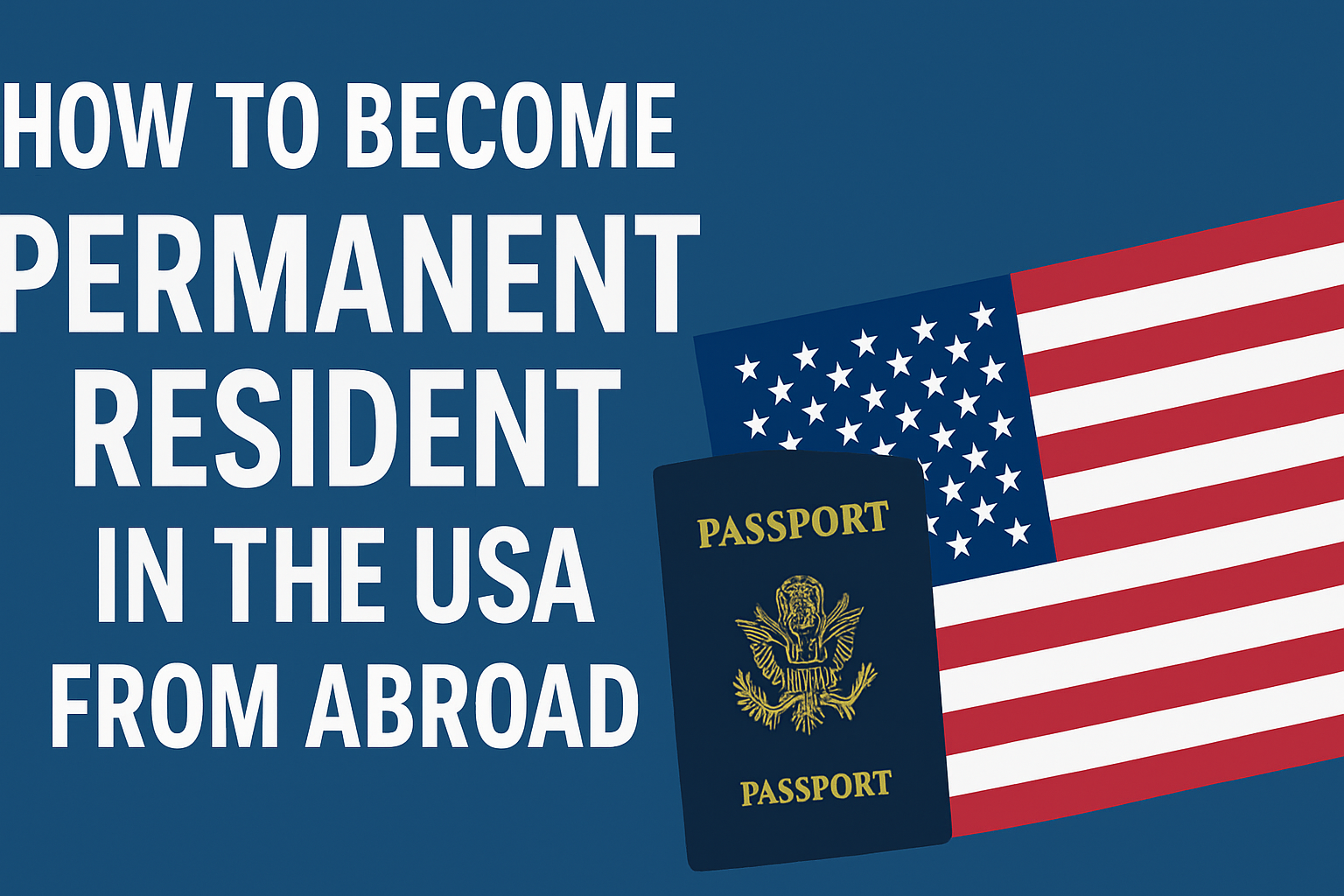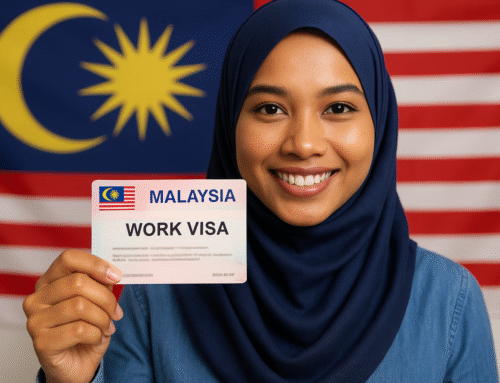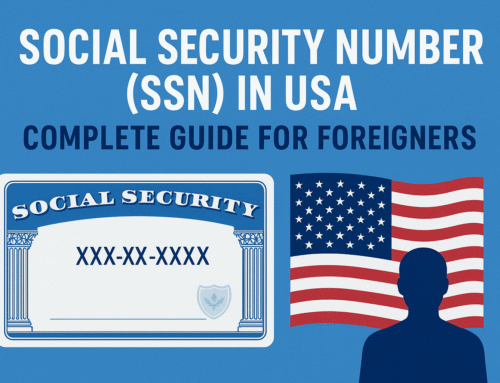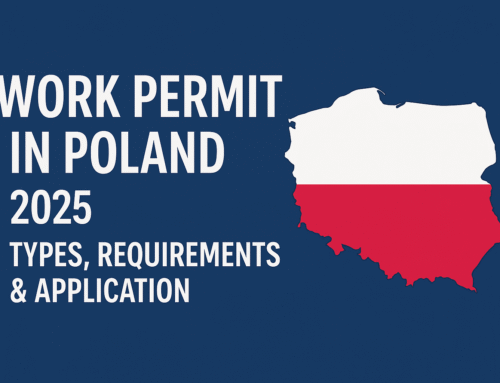The United States continues to be one of the most popular destinations for people around the world who dream of building a better future. From career opportunities to quality education, diverse culture, and a high standard of living, the U.S. offers countless advantages. One of the most secure ways to establish yourself in America is by becoming a permanent resident, often referred to as obtaining a Green Card.
If you are living outside the U.S. and want to know how to apply for permanent residency from abroad, this guide will walk you through the essential details. We’ll cover eligibility, application pathways, required documents, and important tips to maximize your chances of success.
What Is U.S. Permanent Residency?
Permanent residency in the U.S. gives a foreign national the legal right to live and work in the country indefinitely. As a Green Card holder, you enjoy many benefits such as:
- The ability to live and work anywhere in the U.S.
- Access to better employment opportunities.
- Pathway to U.S. citizenship after meeting certain residency requirements.
- Protection under U.S. law.
- Eligibility to sponsor certain family members for immigration.
However, permanent residents are still citizens of their home country unless they go through the naturalization process to become U.S. citizens.
Main Pathways to Get a U.S. Green Card from Abroad
There are multiple ways to obtain a U.S. Green Card depending on your background, family situation, or career path. Below are the most common routes:
1. Family-Based Green Card
If you have close relatives who are U.S. citizens or permanent residents, you may qualify for family-based immigration. The categories include:
- Immediate Relatives of U.S. Citizens (spouse, unmarried children under 21, or parents). These applications usually get priority.
- Family Preference Categories such as siblings, married children, or extended family members. These can take longer due to limited visa numbers each year.
2. Employment-Based Green Card
Professionals, skilled workers, and investors may qualify for employment-based permanent residency. Categories include:
- EB-1: Priority workers, such as individuals with extraordinary ability in science, arts, business, or athletics.
- EB-2: Professionals with advanced degrees or exceptional ability.
- EB-3: Skilled workers, professionals, and some unskilled workers.
- EB-4: Special immigrants, including religious workers and employees of certain international organizations.
- EB-5: Investors who invest a minimum amount (typically $800,000–$1,050,000) in a U.S. business that creates jobs.
3. Diversity Visa Lottery (DV Lottery)
Each year, the U.S. government runs the Green Card Lottery, officially called the Diversity Visa Program. This program grants around 50,000 Green Cards annually to applicants from countries with historically low immigration rates to the U.S.
4. Refugee or Asylee Status
Individuals who have been granted asylum or refugee status may apply for permanent residency after living in the U.S. for at least one year.
5. Other Special Categories
Some people may qualify under unique programs, such as those for victims of abuse, human trafficking, or crime.
The Consular Processing Method
Since you are applying from abroad, you will usually go through Consular Processing. This means your case is handled by a U.S. consulate or embassy in your home country. The steps are as follows:
- Petition Filing – A family member or employer in the U.S. typically files an immigration petition (Form I-130 or I-140) on your behalf. In some categories, like the EB-5, you file your own petition.
- Approval and Case Transfer – Once approved, your case is transferred to the National Visa Center (NVC), which assigns a case number and invoice ID.
- Paying Fees and Submitting Documents – You must pay visa processing fees and submit civil documents (such as birth certificate, passport, police certificates, marriage records, etc.).
- Visa Interview – The U.S. consulate in your country will schedule an interview. You’ll also undergo a medical examination by an authorized physician.
- Approval and Entry to the U.S. – If approved, you will receive an immigrant visa stamped in your passport. After entering the U.S., your Green Card will be mailed to your U.S. address.
Required Documents for Permanent Residency Application
While exact requirements may vary by category, applicants usually need the following:
- Valid passport.
- Birth certificate.
- Marriage or divorce records (if applicable).
- Police clearance certificates from all countries where you lived for more than six months.
- Medical examination results.
- Affidavit of Support (Form I-864) from a sponsor, if applying through family.
- Employment offer letter or relevant documents, if applying through work.
Processing Times and Costs
- Processing Times: Depending on the category, it may take a few months to several years. Family-based petitions for immediate relatives are usually faster, while family preference categories can take over a decade due to visa backlogs. Employment-based applications generally range from 1–3 years.
- Costs: Expect to pay between $1,200 and $2,000 in government filing fees, not including medical exams, translations, or attorney fees.
Common Challenges and How to Overcome Them
- Lengthy Waiting Periods – Some visa categories have long backlogs. Keep checking the Visa Bulletin published monthly by the U.S. Department of State.
- Incomplete Documentation – Missing or incorrect paperwork can cause delays. Always double-check your forms and supporting evidence.
- Financial Requirements – Sponsors must meet income thresholds. If your family sponsor doesn’t qualify, a joint sponsor may help.
- Visa Denials – These can happen for reasons such as fraud, past immigration violations, or criminal records. In such cases, legal assistance may be necessary.
Tips for a Successful Application
- Start Early: Some processes take years, so plan ahead.
- Stay Organized: Keep all important documents in order and make copies.
- Prepare for the Interview: Answer questions honestly and bring all required papers.
- Consult a Professional: Immigration laws can be complex, and consulting an attorney or accredited representative can help avoid costly mistakes.
- Stay Updated: Rules and requirements may change, so regularly check official U.S. government websites.
Benefits of U.S. Permanent Residency
Once you become a Green Card holder, you unlock numerous opportunities:
- Freedom to live and work anywhere in the U.S.
- Opportunity to travel in and out of the country more easily compared to temporary visas.
- Eligibility for government programs like Social Security after meeting certain conditions.
- The right to apply for U.S. citizenship after five years of continuous residency (three years if married to a U.S. citizen).
Final Thoughts
Becoming a permanent resident of the United States from abroad is a life-changing journey. While the process can seem complicated, understanding the different pathways, preparing the required documents, and staying informed will help you navigate it successfully.
Whether you are joining family, pursuing a career, investing in the economy, or trying your luck with the Diversity Visa Lottery, your path to a U.S. Green Card is achievable with the right strategy and persistence.
Permanent residency is not just a visa—it’s the foundation for building your American dream. With careful planning and determination, you can make the U.S. your new home.
Read Also:






Leave A Comment